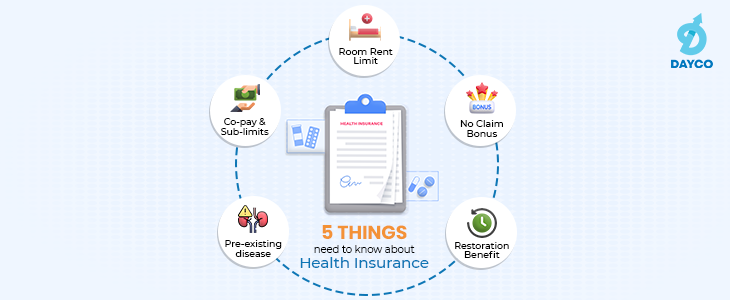“To be, or not to be” – Shakespeare’s Hamlet contemplated this in the Elizabethan era.
Cut to the present era of consumerism – he would have definitely been pondering on whether “to borrow or to save” before purchasing his 3BHK apartment or the newest model of Mercedes-Benz!
The common factor between the two extremities of borrowing and saving is the Interest Rate, a force that works FOR you when you SAVE money and AGAINST you when you BORROW.
What are Interest Rates?
In its simplest form, interest rates are the costs of borrowing money, usually expressed as a percentage of the principal amount of a loan or debt. It represents the amount of compensation the lender or a financial institution earns for providing the borrowers with funds. On the flip side, interest rates are also rewards for saving money.
Central Banks: The handyman operating the interest tool
Interest rates are typically set by a country’s central bank, which in most cases, operates independently from the government. The Reserve Bank of India (RBI) is responsible for setting interest rates through its monetary policy committee after assessing economic conditions, thereby determining whether interest rates should be altered. The goal is to maintain stability and a sustainable economic environment.
RBI controls interest rates through a combination of monetary policy tools. The key ways through which RBI controls interest rates in the country are:
- Repo Rate: Repo rate is the rate at which RBI lends money to commercial banks against government securities. A change in the repo rate will allow RBI to influence the cost of borrowing for banks which can affect the interest rates charged by commercial banks to their customers.
- Reverse Repo Rate: Reverse repo rate is the rate at which banks can park their excess funds with the RBI. RBI changes the reverse repo rate, thereby influencing the number of funds banks hold with themselves, which can affect the interest rates they offer to customers.
- Cash Reserve Ratio (CRR): CRR is the minimum percentage of deposits that commercial banks have to keep as a cash reserve with the RBI. This is used for altering the money supply in the economy.
- Open Market Operations (OMOs): OMOs involve the purchase and sale of government securities by the RBI in the open market. RBI can influence liquidity in the market, which affects interest rates offered by banks.
What Happens When RBI Hikes Interest Rates?
A change in interest rates will affect multiple components within a country’s financial system framework. If RBI changes interest by certain basis points, several economic effects may occur:
- Borrowing costs: A rise in interest rates will automatically increase borrowing costs. As interest rates and bond prices have an inverse relationship, a rise in interest rates will lower the prices of bonds, thereby also lowering the investors fixed income. Investors are less likely to borrow or refinance existing debts as it is now more expensive to borrow money. High interest leads to higher credit card rates and higher mortgage rates.
- Consumer Spending: Consumer spending decreases for two reasons. Firstly, higher interest rates will encourage consumers and businesses to save more money in lieu of receiving a higher return on savings deposits. Secondly, people will borrow less or try to pay off existing debt due to the higher cost of borrowing, thus reducing consumer expenditure.
- Savings: In contrast to the previous point, higher interest rates will encourage higher savings from consumers and businesses, thereby shifting money from the present to the future.
- National Debt: An increase in interest rate surges up borrowing costs for the government, thereby increasing public debt and budget deficits.
- Profits of Business Sector: Is RBI rate hike good for banks? Yes, it is! Interest rate hikes will typically increase profits for the banking sector as banks charge higher interest rates for lending money than they do for saving. However, for all other sectors, rate hikes bring down business profits as the cost of capital surges.
- Currency value: Interest rate hikes make a country’s currency attractive towards foreign investors, leading to currency appreciation. Say if the US FED raises interest rates, the dollar becomes stronger, making imports cheaper and reducing exports. The Indian rupee is thus weaker than the dollar, which makes imports highly expensive, but export seeks a boom.
Inflation and Interest Rates: What’s the connection?
Interest rates and inflation are very closely related but are not always straightforward. Central Banks often use interest rate policies as a tool to help manage inflation. When inflation is high, RBI raises rates, making borrowing more expensive and savings more attractive. It lowers consumer spending, thus reducing prices significantly.
Consecutively, when the country is recessionary, RBI lowers interest to spike up activity and stimulate spending and investments to boost economic growth. Borrowing becomes affordable, and consumers and businesses start spending more. Savings become less attractive, and consumers withdraw money to invest and spend.
RBI Interest Rate Predictions for 2023
Interest rate is a handy tool to fix the economy in the short run. RBI regularly reviews and adjusts its monetary policy based on various economic factors like inflation, economic growth and global economic conditions. RBI increased its key repo rate by 25 basis points to 6.5% in February 2023 in response to inflation moderated by food prices. According to notable economists, the RBI is expected to raise this rate by substantial amounts in the succeeding months of 2023.
If you have a question, share it in the comments below or DM us or call us – +91 9051052222. We’ll be happy to answer it.
– Dipanwita Gupta & Debraj Guha Thakurta
















